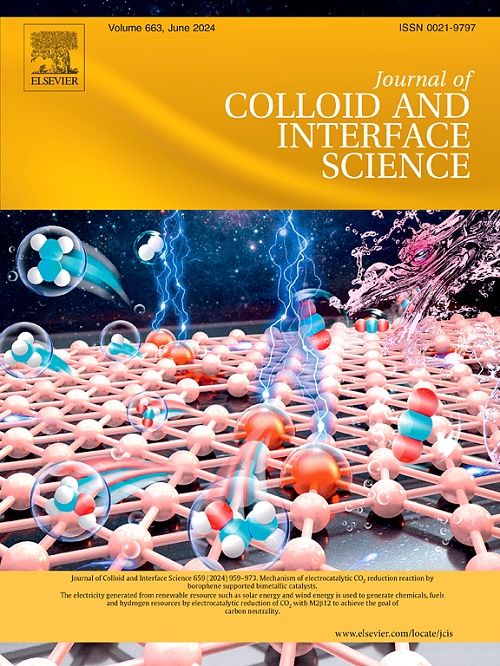Sustainable recovery Co3O4-based catalysts from spent lithium-ion batteries for preferential CO oxidation
IF 9.4
1区 化学
Q1 CHEMISTRY, PHYSICAL
引用次数: 0
Abstract
Retired Lithium-ion batteries (LIBs) present significant challenges related to environmental pollution, making the recycling of battery materials essential for environmental sustainability and energy recovery. Cobalt has been identified as an effective catalyst for oxidation reactions; accordingly, Co3O4 was recovered from batteries directly for use in preferential CO oxidation (CO-PROX). To enhance the low-temperature catalytic activity, supported CuO/Co3O4 catalysts were synthesized, resulting in a remarkable boost in catalytic performance, with thorough CO conversion (T100%) at 160 °C. However, the way a reaction occurs remains unclear, and the active sites for CO adsorption require further investigation. Characterization techniques and density functional theory (DFT) calculations indicated that CuO/Co3O4 exhibits higher lattice oxygen (Olatt) content and strong metal-support interactions, which facilitate CO adsorption while suppressing hydrogen activation. Moreover, in-situ diffuse reflectance infrared Fourier transform spectroscopy (in-situ DRIFTS) analysis was used to analyze reaction intermediates, verifying that CuO/Co3O4 significantly enhances both CO conversion and CO2 selectivity. This research presents a viable strategy for the recycling of retired LIBs and the advancement of efficient catalysts for CO-PROX.

从废锂离子电池中可持续回收co3o4基催化剂,用于优先CO氧化
退役锂离子电池(lib)面临着与环境污染相关的重大挑战,使得电池材料的回收对于环境可持续性和能源回收至关重要。钴已被确定为氧化反应的有效催化剂;因此,从电池中回收的Co3O4直接用于CO- prox的优先氧化。为了提高低温催化活性,合成了负载型CuO/Co3O4催化剂,催化性能显著提高,在160℃时CO转化率达到100%。然而,反应发生的方式尚不清楚,CO吸附的活性位点需要进一步研究。表征技术和密度泛函理论(DFT)计算表明,CuO/Co3O4具有较高的晶格氧(Olatt)含量和强的金属-载体相互作用,有利于CO吸附,同时抑制氢活化。此外,利用原位漫反射红外傅立叶变换光谱(原位DRIFTS)分析了反应中间体,验证了CuO/Co3O4显著提高了CO转化率和CO2选择性。本研究为废弃lib的回收和CO-PROX高效催化剂的发展提供了可行的策略。
本文章由计算机程序翻译,如有差异,请以英文原文为准。
求助全文
约1分钟内获得全文
求助全文
来源期刊
CiteScore
16.10
自引率
7.10%
发文量
2568
审稿时长
2 months
期刊介绍:
The Journal of Colloid and Interface Science publishes original research findings on the fundamental principles of colloid and interface science, as well as innovative applications in various fields. The criteria for publication include impact, quality, novelty, and originality.
Emphasis:
The journal emphasizes fundamental scientific innovation within the following categories:
A.Colloidal Materials and Nanomaterials
B.Soft Colloidal and Self-Assembly Systems
C.Adsorption, Catalysis, and Electrochemistry
D.Interfacial Processes, Capillarity, and Wetting
E.Biomaterials and Nanomedicine
F.Energy Conversion and Storage, and Environmental Technologies

 求助内容:
求助内容: 应助结果提醒方式:
应助结果提醒方式:


